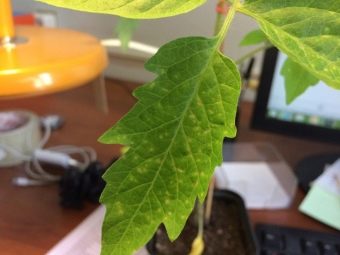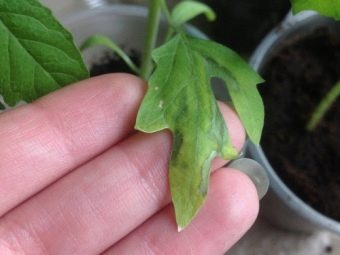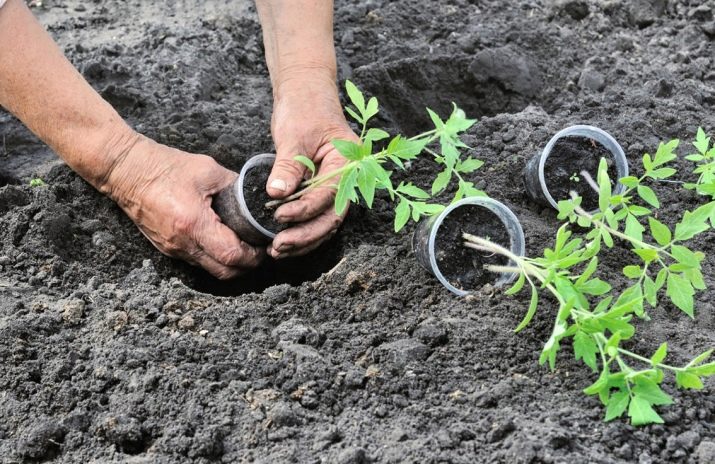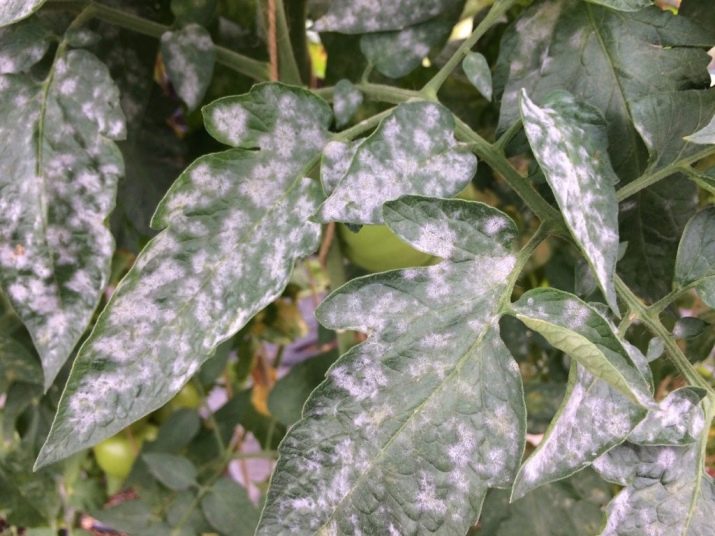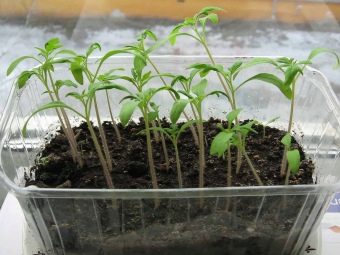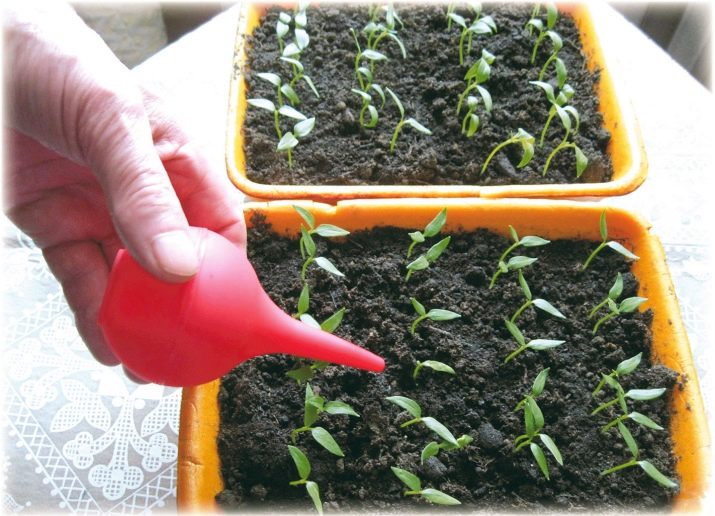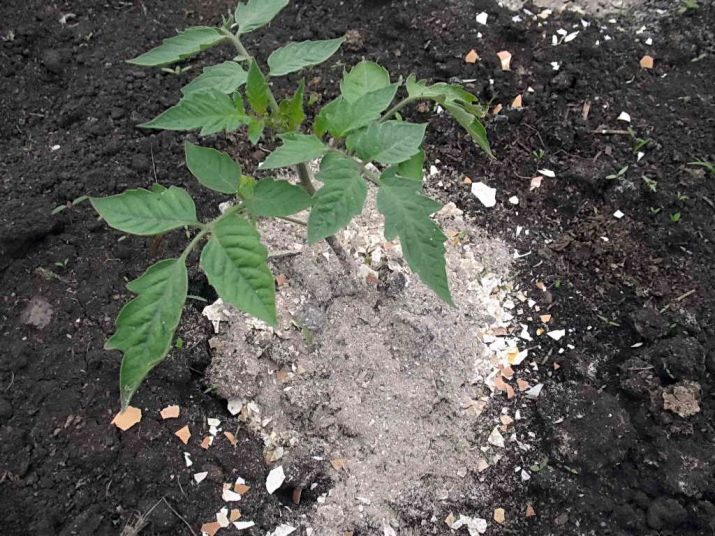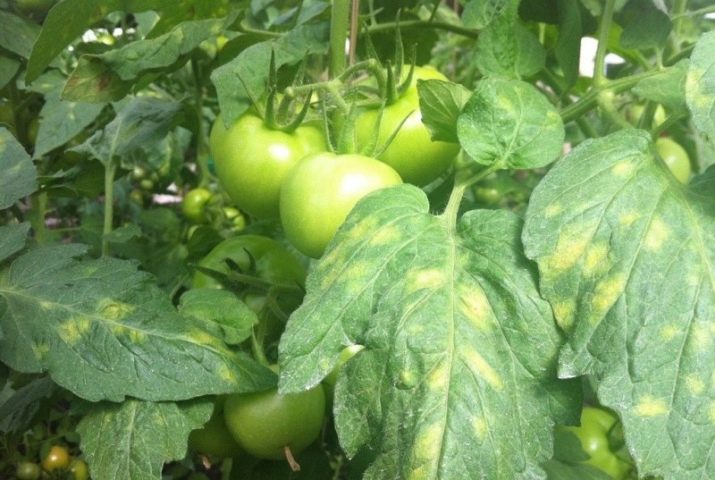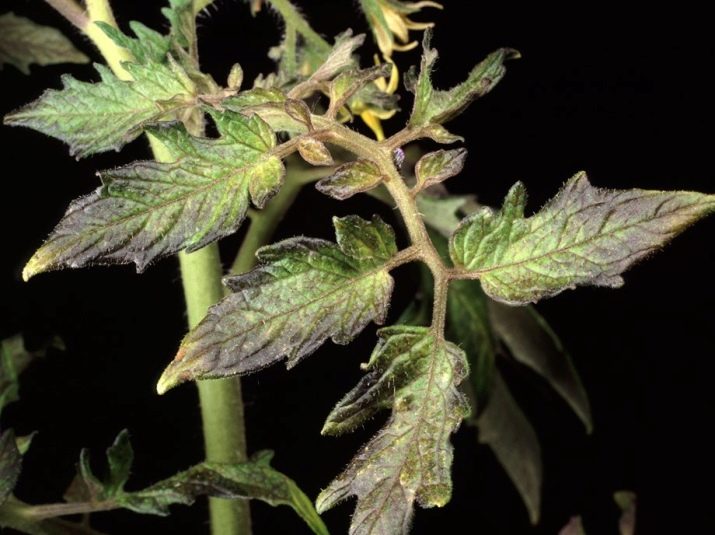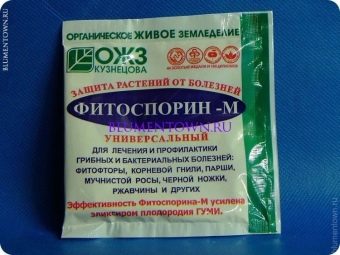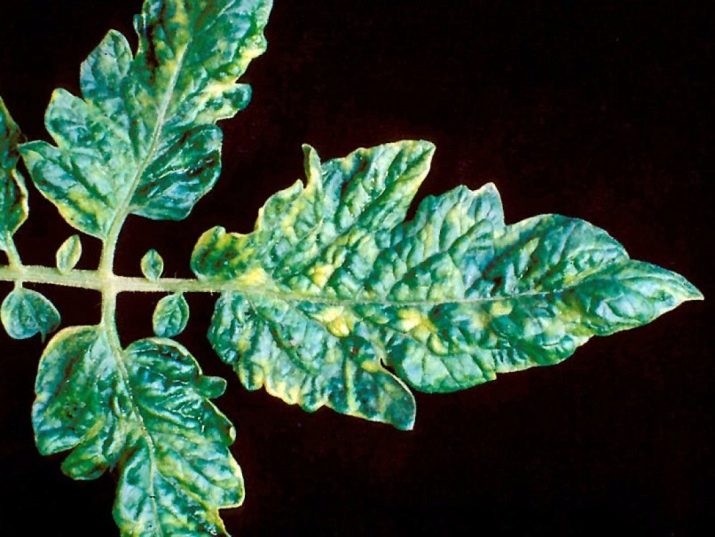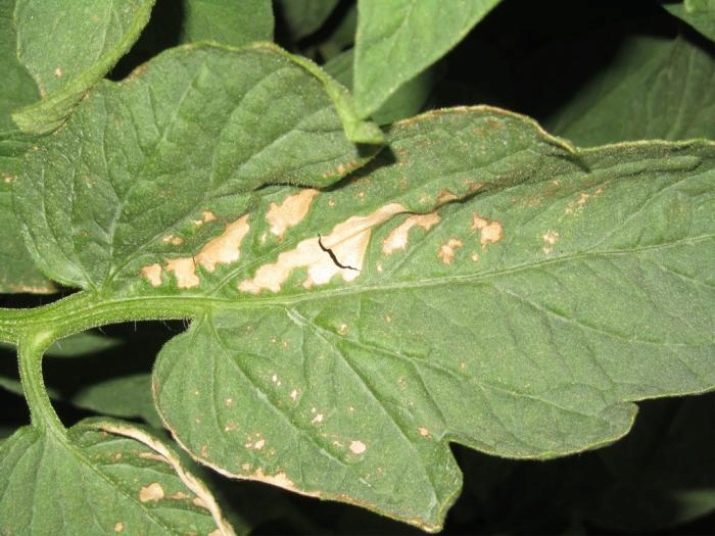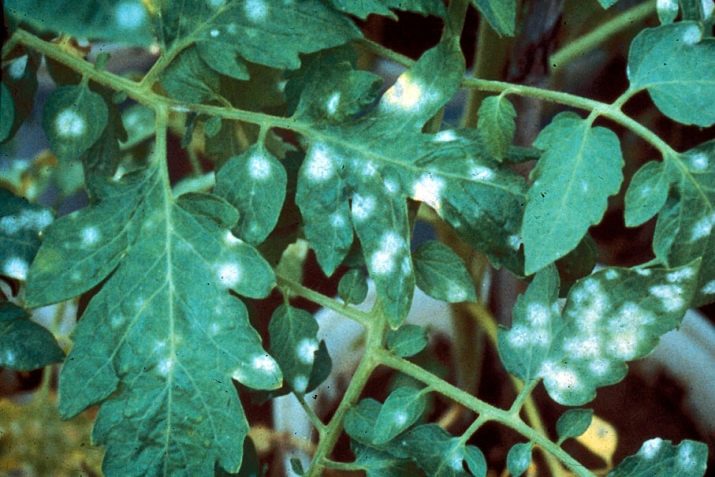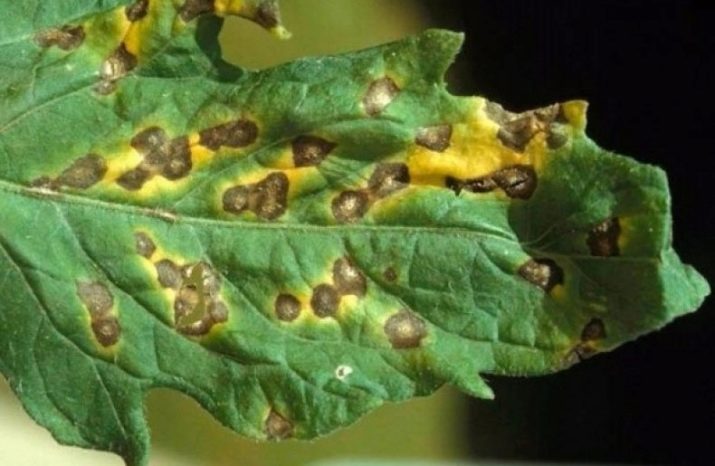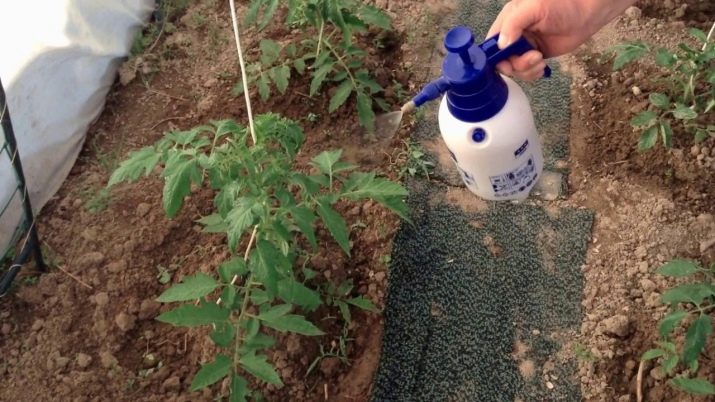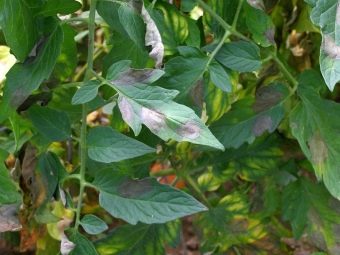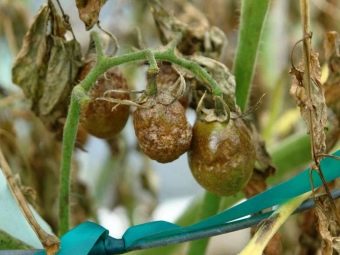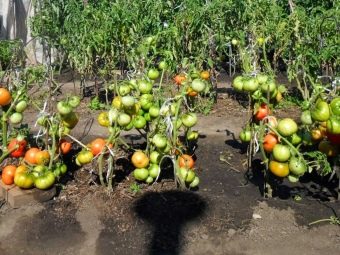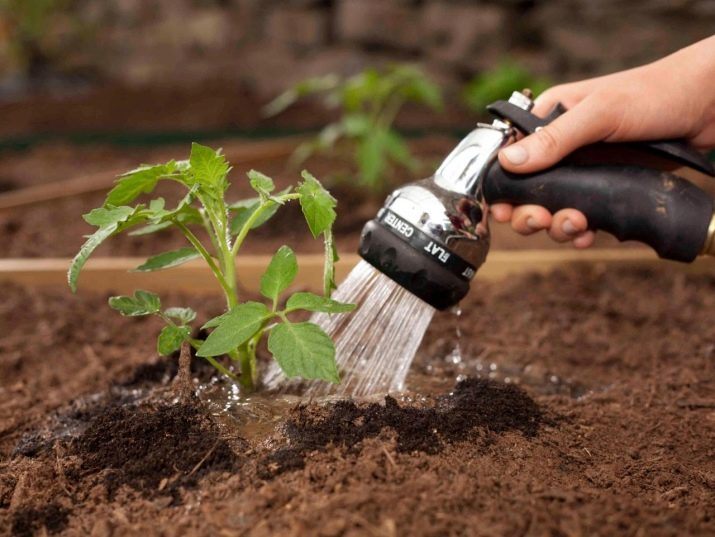White spots on the leaves of tomato seedlings: causes and treatment

Perhaps there is no gardener who would not grow tomatoes.Although tomatoes can hardly be attributed to capricious crops, they can get sick without proper care. The leaves may appear white spots, having different shades and sizes. The causes of white spots may be different, consider the most common of them.
Why did they appear?
Solanaceous crops are considered the most popular plants in gardeners. When growing tomatoes, they need constant care: from sowing seeds to picking up seedlings and planting bushes in the ground. It is necessary to maintain optimum temperature and humidity in order to avoid signs of tomato disease.
If white spots appear on the leaves, it is necessary to find out the reasons for their occurrence. Consider the main ones.
- Fungal infections. They can be considered the main cause of planting diseases. The appearance on the leaves of light or brown spots will indicate a fungal infection.
- Viral infectionswhich represent a serious problem for seedlings. One of the most insidious viral diseases is considered a "mosaic"; at the first symptoms, the leaves begin to acquire a multi-colored color.
- Parasites. Whitefly can cause great damage to the plant, its larvae wrap leaves with cobwebs, after which white spots appear on them and the plant dies.
- Burns If the seedlings are not hardened, and landed immediately on a permanent place, unprepared sprouts will start to hurt.
Planting seedlings at a permanent place should be carried out only after the plants are prepared for new conditions. For this, the seedlings are taken out for a while from the room to the air and left to harden. Time every day should increase. When plants adapt to new weather conditions, they can be planted in the ground. In this case, damage to the leaves by sunburn will be reduced.
In the first days after transplanting, it should be shaded and protected from falling on the bushes of the scorching sun.
White specks on the lower leaflets can appear due to the lack of essential trace elements in plants, such as phosphorus, nitrogen, potassium, calcium, molybdenum and magnesium. If spots appear on the upper leaves, it means that the plant lacks chlorine, iron, manganese, boron. To cope with this problem is easy, you just need to buy in a specialized store suitable fertilizer.
In the greenhouse
To put a plate with fresh tomato and green salad on the table in the summer, you need to take care of the seed in winter. Seeds before planting are recommended to be placed in manganese for some time. After this treatment, the risk of the incidence of seedlings of tomatoes will be less.
Seeds are sown in specially prepared containers and provide them with the right conditions. You need to make sure that the room has a comfortable temperature for their growth and the optimum amount of moisture. Seedlings are planted in the ground when the sprouts become strong and will have a height of at least 20 cm. After planting in open ground, the plant is shaded to protect the leaves from burns, otherwise their tips will begin to dry and twist. Sunburn can affect both the upper and the inner part of the leaf, as a result, they begin to dry out and fall.
If white spots appear on the seedlings, it is necessary to remove infected plants. At the first signs of a disease, it is important to quickly get rid of the cause, otherwise all bushes may die.
To protect the plants, the seedlings are treated with fungicides. Carry out processing in 12-14 days. Many gardeners prefer to treat seedlings with environmentally friendly biopharmaceuticals. One of these means is iodine solution. To make it you need to take:
- iodine - 15 drops;
- milk - 500 ml;
- warm water - 5 liters.
This composition is sprayed tomato seedlings after 2 days.
For processing, you can use another effective way. It is necessary to take:
- laundry soap - 1 bar;
- a bucket of warm water.
Often gardeners use infusion of wood ash and manganese.
Tomatoes in greenhouses can often be affected by cladosporia. Usually this pathology occurs in the middle of summer. On varieties with reduced resistance to diseases or on hybrids, spots begin to appear. When a plant becomes infected with cladosporia, the leaves begin to fall off en masse, which leads to a decrease in yield.
Symptoms of brown spot or cladosporia:
- the first spots appear on the lower part of the plants and then begin to move to other areas;
- the spots are gray and then change color to darker;
- due to the development of the disease, the dry leaves begin to curl and fall off.
Sometimes the disease can affect not only the leaves, but also flowers and fruits. If the plant is not treated, the disease in greenhouse conditions can persist for a long time, up to ten years. The development of cladosporia can be activated if there is high humidity in the room (above 80%) with an air temperature of about 22-25 degrees.
When infecting plants, it is necessary to monitor the temperature regime and humidity in the greenhouse and process the inventory so that the disease does not become healthy bushes.
When the disease first appears, remove the affected leaves. It is better to stop watering and try to air the room more often. For cultivation in the greenhouse is to choose varieties with high resistance to disease.
It is possible to get rid of a cladosporioz, having carried out disinfection and having replaced soil. Plants are treated with “Pseudobacteril” or use “Fitosporin”. After 18-20 days, the bushes should be processed again.
A lot of trouble can bring a viral disease mosaic, which can affect plants in the greenhouse, and after planting in the ground. Seeds are most often infected, so the material should only be purchased from reliable manufacturers and processed before sowing. When mosaic leaves start to be amazed by the spots of different shades, they get a kind of mosaic pattern. It is difficult to fight this disease, therefore, at the first signs, diseased plants must be torn out and disposed of. After that, the whole area is treated with potassium permanganate.
In the open ground
Before planting seedlings in the ground, for several days produce hardening of plants. Under the bright scorching rays of the sun, plants without prior training can get burned, and then transparent spots will appear on the upper leaves. To help the seedlings and cure it of burns, you can use the tool "Espin", they are recommended to treat the bushes in the evening.
After receiving burns, the color of the leaves can no longer be changed. But when using the drug, the bushes will be able to recover, and new green leaves will appear. Process with the preparation "Espin" bushes 1 time per week. It should be 3-4 treatments. Plants that have sunburn will be weaker and begin to bear fruit a week or two later.
Kinds
When white spots appear on the seedlings, it is necessary to find out what disease the plant has undergone. It may be:
- powdery mildew;
- white rot and brown spot;
- septoriosis;
- late blight.
Mealy dew
Often gardeners notice that a white-gray patina has formed on the lower part of the leaves, then on the upper part the spots become yellow. Soon the green leaves begin to dry out and die. The cause of the disease may be increased humidity. When rainy and foggy weather, the fungus begins to become more active.
At first, the infection infects the lower leaves, gradually spreading to the whole plant. With the defeat of tomatoes with powdery mildew after flowering, they will begin to crack and rot.
Septoriosis or white spot
Usually, the disease can affect plants that are planted in the ground.If small bright spots and specks with dark gray edging appeared on the leaves, one can judge the development of the disease. After the appearance of the disease, the plant ceases to grow, and dry leaves remain on the bush, which twist. Due to septoria can lose the entire crop of tomatoes.
What to do?
To get a good crop of tomatoes, plants need constant care. In the case of the development of the disease, it is necessary to urgently take measures and process the seedlings with special preparations.
To get rid of powdery mildew, you should feed the plants with potassium and phosphorus, while nitrogen fertilizers are better not to make, since their excess reduces the plant's immunity. Against powdery mildew, you can use the fungicides "Fundazol" or "Fundazim." During the period when flowering takes place, the plant is treated with "Pseudobacterin".
In addition to these drugs, you can use folk remedies. To do this, take the whey, aged for 2 days, dilute it with water in the ratio of 1 to 9 and treat the diseased plants.
Many gardeners are often faced with late blight, this disease affects not only tomatoes, but also potatoes.
Symptoms of late blight:
- brown-brown spots with a whitish edging appear on the leaves, which increase very quickly;
- on the lower part of the leaf there is a bright patina, resembling a spider web;
- leaves turn yellow, curl and dry;
- the stems become dry and brittle.
The disease can spread very quickly, as it is transmitted from one bush to another in a short time. It is necessary to pull out the affected bushes so that the disease does not go to healthy plants. If late blight occurs in large areas, it is worth spraying the plants with special preparations diluted with water. To combat late blight use of boric acid, "Fitosporin", "Gamar".
Prevention
At the first signs of disease of tomatoes and the appearance of white spots on the leaves, urgent measures should be taken and treatment should be started, otherwise the crop may die.
In order to prevent the appearance and spread of diseases in the greenhouse and on the site, it is necessary:
- observe comfortable conditions in the greenhouse;
- before placing the seeds in the soil and before planting seedlings, treat them with disinfectant solutions;
- in case of severe damage to plants, they must be immediately torn out;
- add necessary trace elements to the soil;
- planting plants in sunny areas, make sure that at first they are shaded.
For the cultivation of tomatoes is to choose a place well lit by sunlight. When planting bushes, it is necessary that the distance between them be at least 60 cm, this will ensure proper ventilation, and they will be less susceptible to viral and bacterial diseases. If you plant the bushes close to each other, when there is abundant watering or in the rainy season, the development of late blight is possible.
During watering, you should try to pour water under the root and avoid droplets on the leaves, so as not to cause burns to the plants. When fertilizing, it is important not to overdo it with their quantity. This is especially true for nitrogen preparations.
Planting tomatoes, you need to prepare the bed in advance. To do this, you need to dig and remove the weeds. The plant is often affected by blight, so do not plant tomatoes on the place where there used to be potatoes, which are also susceptible to this disease.
To prevent the plants from getting sunburn, you need to plant seedlings on places that will be more shaded. In this case, the seedlings quickly adapt to new conditions, the bushes will develop strong and healthy.
How to save white seedlings, see the next video.

